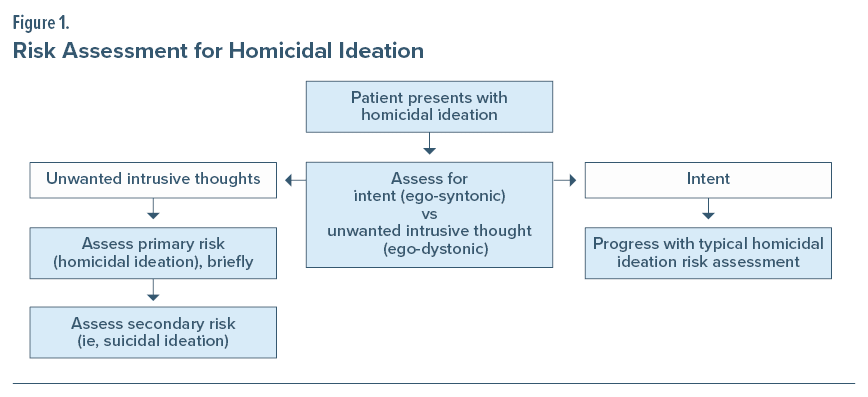True crime has been steadily rising in popularity. In a poll performed in 2022, half of Americans reported that they enjoyed true crime, and 13% reported it was their favorite genre.1 Within 28 days of its release, the series Dahmer—Monster: The Jeffrey Dahmer Story became the second highest viewed English-language show on Netflix.2 With growing interest in true crime and the accessibility of media via streaming services, adolescents are increasingly exposed to dramatizations of criminal violence. There remains uncertainty and nuance within the literature; however, there appears to be a causal relationship between media violence and aggression among youth.3 Prior research has also shown a relationship between consuming media containing suicide and increased risk of suicidal ideation.4 Consumption of violent media by at-risk individuals could result in distressing intrusive thoughts of violence and lead to increased psychiatric emergency department (ED) presentations with what initially appears to be “homicidal ideation” but in fact represents increased risk of self-harm and suicide. We will discuss 2 cases of adolescents with no prior psychiatric history who presented with suicidal and homicidal ideation after watching Dahmer—Monster: The Jeffrey Dahmer Story.
Case 1
A 15-year-old girl with no formal psychiatric history or history of aggressive behavior presented to the ED for intrusive thoughts including suicidal and homicidal ideation. She reported that these thoughts began after she viewed Dahmer—Monster: The Jeffrey Dahmer Story 5 days prior to her presentation to the ED. The patient had thoughts about harming her mother and herself. She reportedly did not wish to act on these thoughts but was afraid about the possibility of losing control. This incongruence resulted in significant anxiety with worry, insomnia, shaking, poor appetite, and tearfulness. Her obsessive thoughts were exclusively related to harming herself or her family or the consequences for doing so with no symptoms of compulsive behavior.
The patient’s presentation was consistent with an acute stress disorder (ICD-10 code F43.0) after consuming violent media, and she was discharged after engaging in safety planning. The following day, she presented again to the ED for persistence of her previous complaints of intrusive violent thoughts and insomnia, though she had not consumed any additional violent media. Her presentation was consistent with her previously diagnosed acute stress reaction, and she was discharged with outpatient resources.
In the outpatient setting, the patient’s symptoms persisted, and she was diagnosed with major depressive disorder, moderate (ICD-10 code F33.1), unspecified anxiety disorder (ICD-10 code F41.9) with obsessive-compulsive disorder (OCD) features. She reported improvement in her anxiety and obsessive thoughts with psychotherapy and initiation of fluoxetine 20 mg/d and gabapentin 300 mg twice/d as needed; however, she continued to endorse fear of recurrence of these intrusive violent thoughts and acting on them.
Case 2
A 15-year-old boy with no formal psychiatric history or history of aggressive behavior presented to the ED for active suicidal ideation with a plan to cut himself from his wrist to his elbow. He described suicidal ideation in the context of several weeks of worsening depressive symptoms, poor sleep due to racing thoughts, and conflict with his girlfriend. During further assessment, the patient endorsed homicidal ideation with thoughts of cutting people up, decomposing their body parts, and engaging in cannibalism. Both the patient and his mother reported that these thoughts began after he stayed up all night and watched Dahmer—Monster: The Jeffrey Dahmer Story. He denied intention or desire to act on these thoughts and stated that they were worse at night and impaired his sleep. On the inpatient unit, this patient continued to endorse intrusive thoughts of violence and cannibalism being worse at night. He was diagnosed with major depressive disorder and unspecified anxiety disorder. Fluoxetine was initiated for depressive symptoms and titrated to 20 mg/d with melatonin 6 mg nightly for sleep. These intrusive thoughts and his distress improved at discharge.
Discussion
These cases highlight the association between consumption of violent media, distressing ruminative thoughts of homicide, and suicidality. In both cases, the patients had watched a dramatization of Jeffrey Dahmer’s gruesome murders and cannibalism and subsequently experienced intrusive thoughts of the portrayed violent acts as if they themselves were going to carry them out.
In risk assessment of aggressive intrusive thoughts, anger rumination, support of violence, and frequency of aggressive script rehearsal have been found to be predictive of aggressive behaviors.5 It has been noted that when evaluating for the primary risk for violence or aggression, “there are no recorded cases of a person with OCD carrying out their obsession.”6(p333) This is further supported by evidence that intrusive violent thoughts are typically ego-dystonic, and patients are motivated to seek help and will avoid violent triggers.6
During our assessment, it became evident that these thoughts were unwanted and did not align with the patients’ internal desires. This finding parallels the dissonance associated with the obsessions in OCD.7 Research among college students with OCD found that violent obsessions played a unique role in suicidality, whereas sexual or religious obsessions did not.8 Therefore, assessment should not focus primarily on the risk of the patient carrying out the intrusive thoughts but rather on the risk of the patient’s efforts to relieve the associated distress (Figure 1).6 In both cases, the patients were disquieted by the possibility that they may lose control and act on these intrusive homicidal thoughts, which resulted in insomnia, hopelessness, and ultimately suicidal ideation.
Conclusion
When evaluating for the chief complaint of homicidal ideation, physicians should assess for recent consumption of violent media and determine whether their ideation represents true intent to harm or distress over unwanted thoughts. A thorough risk assessment for suicidal ideation is crucial for patients who are distressed by violent intrusive thoughts. We should additionally counsel our patients who struggle with obsessive or intrusive thoughts to be wary of consuming violent media due to the possible distress caused by rumination.
Article Information
Published Online: January 23, 2024. https://doi.org/10.4088/PCC.23cr03577
1© 2024 Physicians Postgraduate Press, Inc.
Prim Care Companion CNS Disord 2024;26(1):23cr03577
Submitted: June 7, 2023; accepted September 12, 2023.
To Cite: Thompson TJ, Chen B, Mabry T, et al. Homicidal ideation in adolescents after viewing Jeffrey Dahmer Netflix drama. Prim Care Companion CNS Disord. 2024;26(1):23cr03577.
Author Affiliations: Atrium Health Wake Forest Baptist, Department of Psychiatry and Behavioral Medicine, Winston Salem, North Carolina (all authors).
Corresponding Author: Tyler J. Thompson, MD, 1 Medical Center Boulevard, Winston Salem, NC 27157 ([email protected]).
Relevant Financial Relationships: None.
Funding/Support: None.
Additional Information: The information in both cases has been de-identified to protect anonymity.
References (8)

- Orth T. Half of Americans enjoy true crime, and more agree it helps solve cold cases. Accessed November 18, 2022. https://today.yougov.com/topics/entertainment/articles-reports/2022/09/14/half-of-americans-enjoy-true-crime-yougov-poll
- Tassi P. ‘Dahmer’ Is Netflix’s Second Highest Viewed English Language Show Ever. Accessed November 11, 2022. https://www.forbes.com/sites/paultassi/2022/10/12/dahmer-is-netflixs-second-highest-viewed-english-language-show-ever/?sh=36a5c23840e0
- Anderson CA, Bushman BJ, Bartholow BD, et al. Screen violence and youth behavior. Pediatrics. 2017;140(suppl 2):S142–S147. PubMed CrossRef
- Hong V, Ewell Foster CJ, Magness CS, et al. 13 Reasons why: viewing patterns and perceived impact among youths at risk of suicide. Psychiatr Serv. 2019;70(2):107–114. PubMed CrossRef
- Pampaloni I, Marriott S, Pessina E, et al. The global assessment of OCD. Compr Psychiatry. 2022;118:152342. PubMed CrossRef
- Veale D, Freeston M, Krebs G, et al. Risk assessment and management in obsessive–compulsive disorder. Adv Psychiatr Treat. 2009;15(5):332–343. CrossRef
- American Psychiatric Association. Obsessive Compulsive and Related Disorders. Diagnostic and Statistical Manual of Mental Disorders. Fifth Edition, Text Revision. 2022.
- Ching TH, Williams M, Siev J. Violent obsessions are associated with suicidality in an OCD analog sample of college students. Cogn Behav Ther. 2017;46(2):129–140. PubMed CrossRef
Please sign in or purchase this PDF for $40.
Save
Cite




